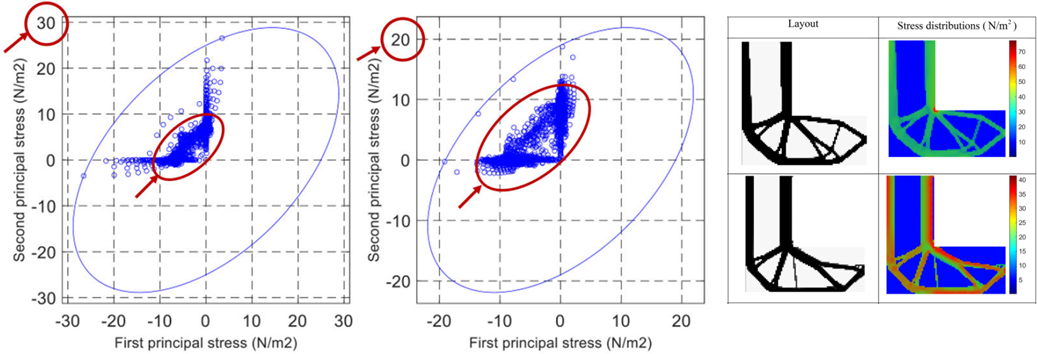[132] Stress-Based topology optimization under the stress relaxation effect
G. H. Yoon, M. Takalloozadeh, and P. Esmailpour. Mechanics Based Design of Structures and Machines 51, no. 9 (2023): 5141-5163.
One of the effects of creep phenomena in structures is stress relaxation. Owing to this effect, the stiffness of each point is inversely related to the stress at that point, which causes a stress redistribution, a reduction of the maximum stress, and an increment in the displacement field. By contrast, for structural optimization, it is a practical and challenging problem to consider the maximum stress as a failure criterion or objective function. In the present study, the stress relaxation effect was investigated in stress-based topology optimization. The so-called solid isotropic material with penalization method and a nonlinear finite element analysis are utilized for this purpose. The maximum von Mises stress and the total volume of the structure are selected as the objective function and constraint, respectively. The main novelty of this research is to find the optimized topology with the least maximum stress by developing and implementing a time-dependent adjoint method for sensitivity analysis. Implementing the calculated sensitivity for stress-based problems in a gradient-based optimization method, such as the optimality criteria, is quite challenging, and some numerical instabilities in the optimization process are addressed. Several examples are solved with and without considering the stress relaxation effect. The results reveal that the influence of stress relaxation in the reduction of stress concentration makes the optimized layout more similar to the optimized layout obtained by minimizing the compliance for the linear structures.
